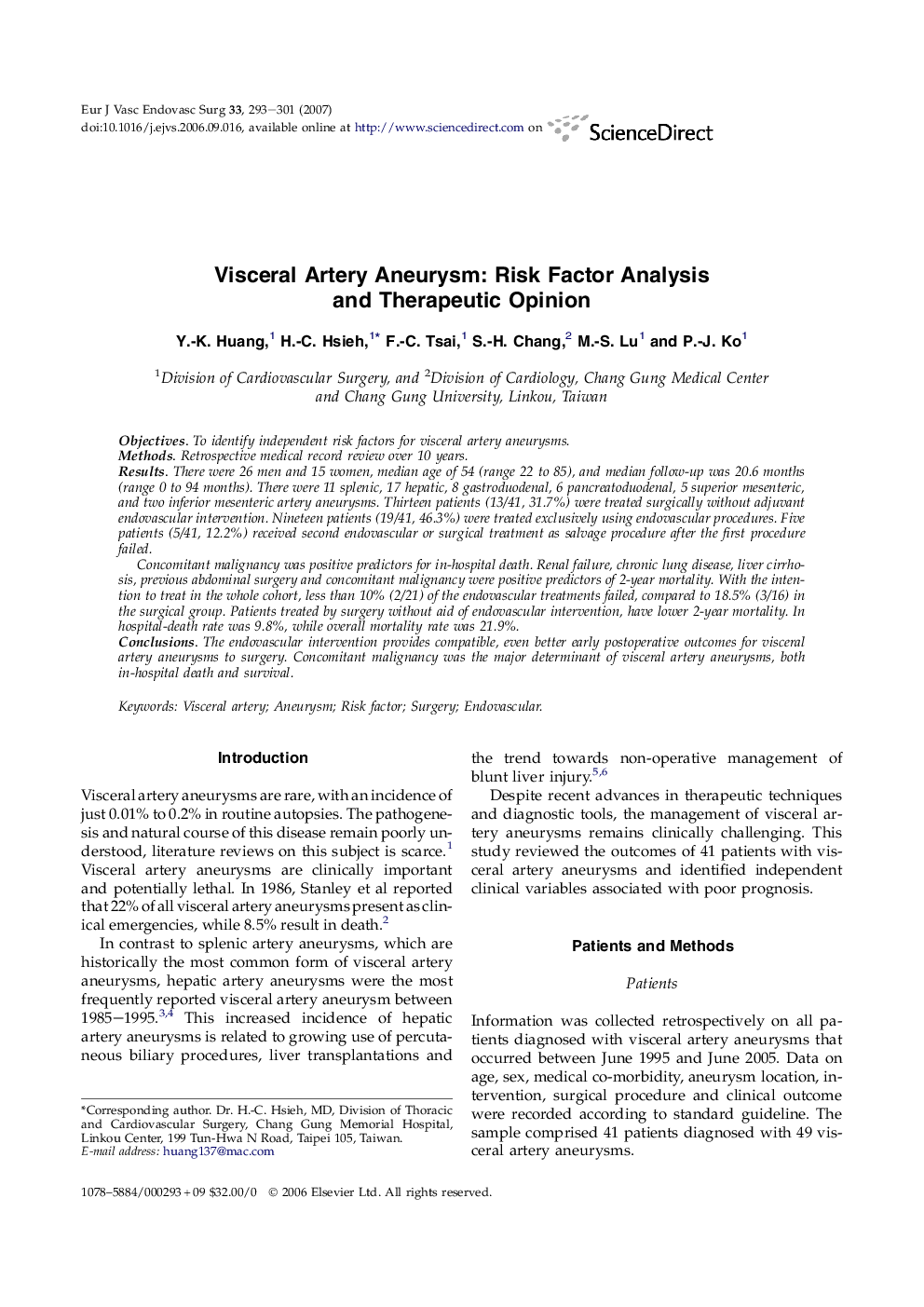| Article ID | Journal | Published Year | Pages | File Type |
|---|---|---|---|---|
| 2914637 | European Journal of Vascular and Endovascular Surgery | 2007 | 9 Pages |
ObjectivesTo identify independent risk factors for visceral artery aneurysms.MethodsRetrospective medical record review over 10 years.ResultsThere were 26 men and 15 women, median age of 54 (range 22 to 85), and median follow-up was 20.6 months (range 0 to 94 months). There were 11 splenic, 17 hepatic, 8 gastroduodenal, 6 pancreatoduodenal, 5 superior mesenteric, and two inferior mesenteric artery aneurysms. Thirteen patients (13/41, 31.7%) were treated surgically without adjuvant endovascular intervention. Nineteen patients (19/41, 46.3%) were treated exclusively using endovascular procedures. Five patients (5/41, 12.2%) received second endovascular or surgical treatment as salvage procedure after the first procedure failed.Concomitant malignancy was positive predictors for in-hospital death. Renal failure, chronic lung disease, liver cirrhosis, previous abdominal surgery and concomitant malignancy were positive predictors of 2-year mortality. With the intention to treat in the whole cohort, less than 10% (2/21) of the endovascular treatments failed, compared to 18.5% (3/16) in the surgical group. Patients treated by surgery without aid of endovascular intervention, have lower 2-year mortality. In hospital-death rate was 9.8%, while overall mortality rate was 21.9%.ConclusionsThe endovascular intervention provides compatible, even better early postoperative outcomes for visceral artery aneurysms to surgery. Concomitant malignancy was the major determinant of visceral artery aneurysms, both in-hospital death and survival.
